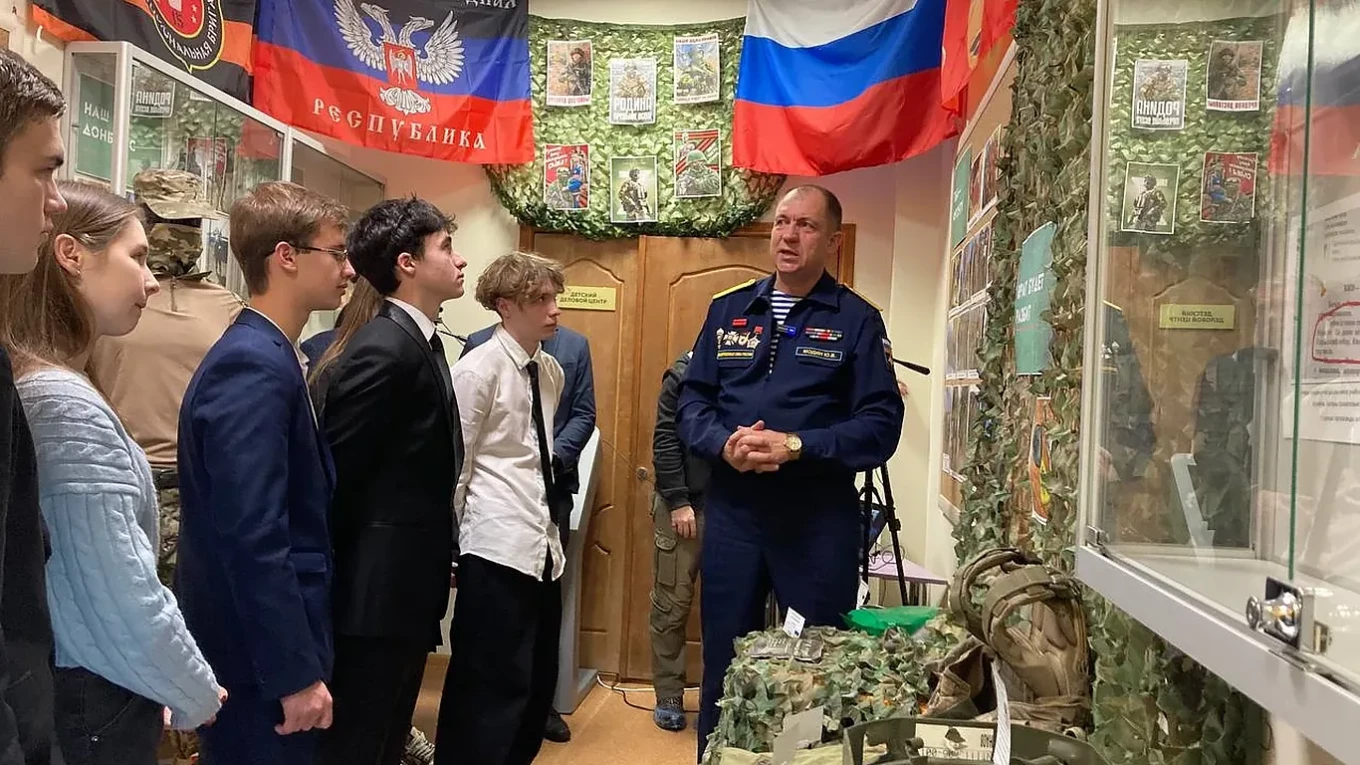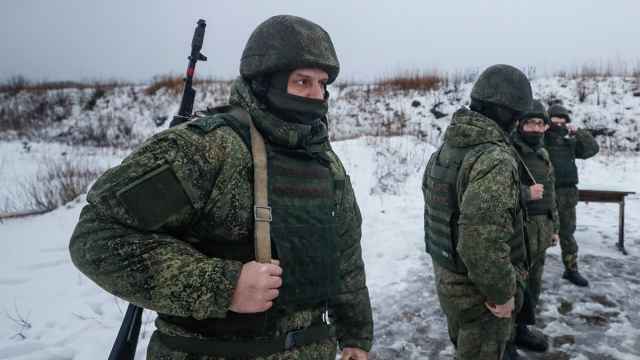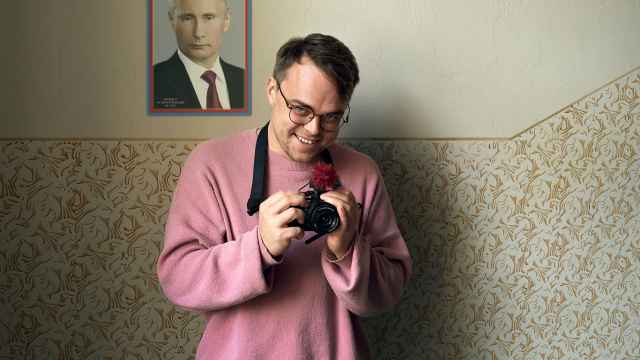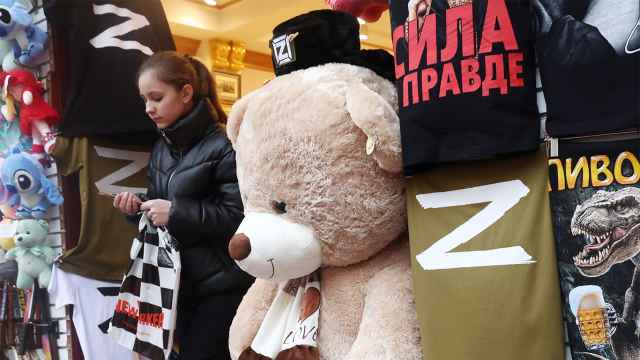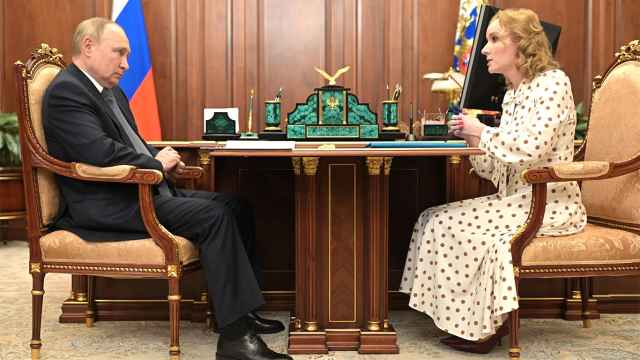“I am confident that the Special Operation Museum opened today at the school will provide our younger generation with a true example of courage, patriotism and love for their Motherland,” a Belgorod city deputy said as he inaugurated the museum at School No. 34.
Among the museum’s first exhibits include a military banner and the personal belongings of a school graduate who died in the war. The banner, school administrators said, was blessed by Russian Orthodox Church leader Patriarch Kirill.
Russian schools have been significantly impacted by the country's three-year war in Ukraine, with patriotic and military lessons added to the curriculum and memorial plaques installed on facades in honor of fallen graduates.
But over the past year, entire museums dedicated to the Kremlin’s “special military operation” have become increasingly widespread in Russian schools as the state seeks to indoctrinate all generations with its wartime narrative. Meanwhile in Ukraine, hundreds of schools have been damaged or destroyed in Russia’s war.
“Earlier [at the beginning of the full-scale war], [these museums were] a local initiative — someone pushed for it, someone took Putin’s speech too literally. But now we are seeing a wider trend,” independent educator Dima Zitzer told The Moscow Times.
School war museums are being opened in both the capital Moscow and in regions that have been most affected by mobilization. In Ulan-Ude, the capital of the eastern Siberian republic of Buryatia, an exhibition about the war in Ukraine was opened in a children’s art school.
“Museums like these will allow us to convey the truth, the real truth,” the mayor of Ulan-Ude said at the opening ceremony.
Vladislav Staf, a historian and researcher of memorial culture, said exhibitions of war memorabilia in schools are an attempt by the authorities to justify the three-year conflict.
“There is still no simple answer as to why the war is being fought,” Staf told The Moscow Times. “The most unexpected explanations have been given — one even claimed it was ‘against global homosexuality.’ It sounds comical, but nevertheless, it shows that a single, clear answer still does not exist.”
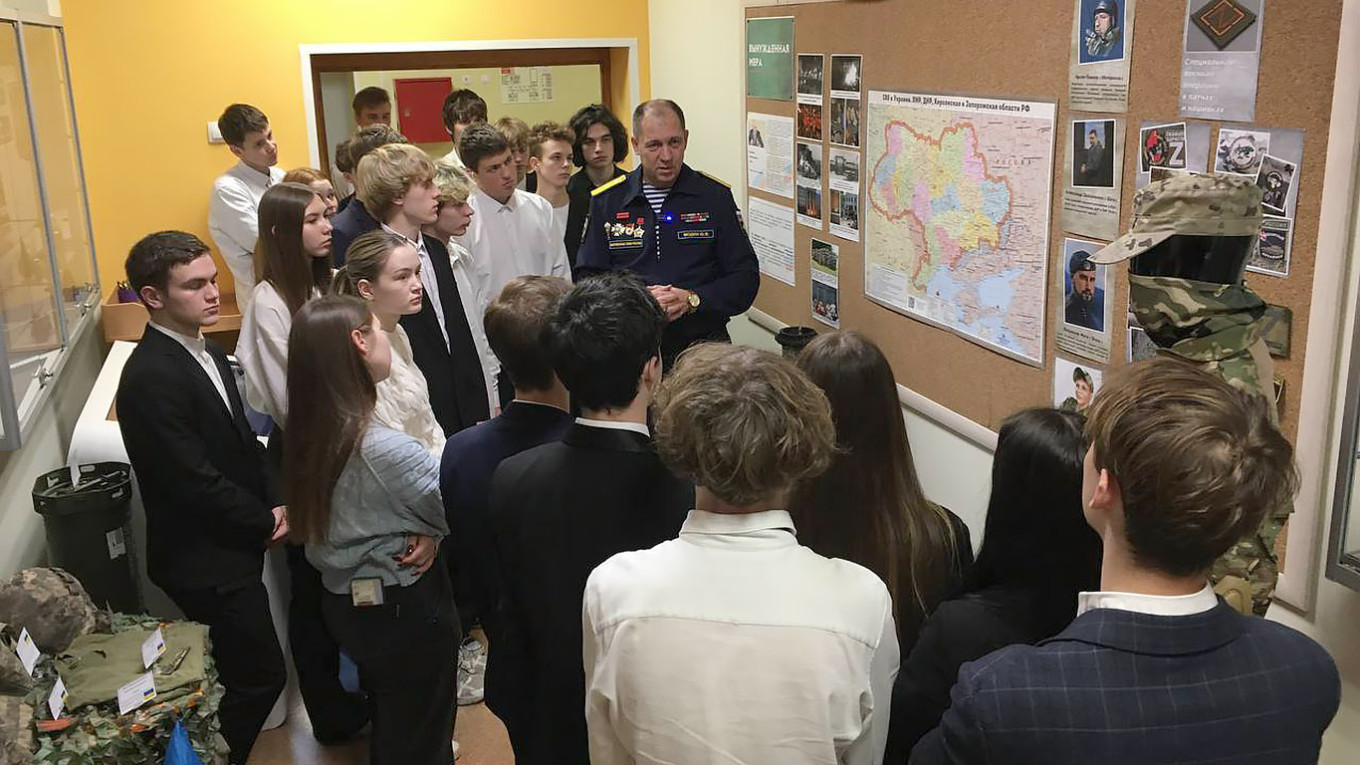
In a rural school in the republic of Bashkortostan, a museum was created with the support of the ruling United Russia party to honor local men who died in the war. Among its exhibits are portraits of the fallen, a map of the front line, helmets and even a packet of wet wipes supplied to soldiers.
“My son volunteered as soon as the Bashkir battalions began forming. Six months later, he was gone. It was very frightening,” said the mother of one of the fallen soldiers during the opening ceremony.
This museum includes a separate exhibition dedicated to World War II, reinforcing the Kremlin’s propaganda narrative that Russia is fighting the same war against fascism today that it was when it fought Nazi Germany.
“Putin and his inner circle use rhetoric that portrays the war in Ukraine as yet another sacred war against fascism. And such a war, by definition, cannot be considered criminal,” Staf said.
Sometimes, exhibitions about the war in Ukraine are organized both inside and outside schools.
In the fall of 2024, a checkpoint “just like on the front lines” was installed in the yard of a school in Simferopol, annexed Crimea, named after the 85th Artillery Regiment. Inside a military headquarters built on the school grounds are bunk beds resembling army barracks. The school administration now plans to open a shooting range for firearms training.
“Straight from the front lines — students of School No. 5 can now see fragments of downed NATO missiles, helmets and bullet casings,” a local news anchor said of the school's museum.
Zitzer said he fears that the longer the war in Ukraine continues, the more that children will be indoctrinated with propaganda.
“Until the age of seven, a child unconditionally believes adults,” he told The Moscow Times. “And if the war lasts for 10 years, there will be no teenager who hasn’t encountered indoctrination at a young age.”
In Moscow, a “History of Donbas” museum was opened at School No. 1164 with the support of the Education Ministry, the Victory Museum and the Russian-installed Education and Science Ministry of the occupied Donetsk region.
One of the museum’s exhibitions, titled “Stolen Childhood,” is dedicated to children from Donetsk.
“The name was chosen by the students themselves. Our students and those from Gymnasium No. 122 in Donetsk, with whom we created this museum, have formed a friendship,” said the director of the Moscow school.
In addition to shells, bullets and a large portrait of President Vladimir Putin, the museum features an interactive touch-screen panel where visitors can listen to stories from children in Donetsk.
Late last year, the Association of Special Operation Veterans won a grant from the Moscow Mayor’s Office to create more museums dedicated to the “heroes and events” of the war in Ukraine.
Five more of these museums will open in schools across the capital this year, with up to 5 million rubles ($50,000) allocated for their installation.
At one St. Petersburg school, a military museum was opened in December with the support of the Española military unit, which includes men with openly neo-Nazi views.
Among the exhibits are shell fragments, downed drones and children’s drawings that Russian soldiers kept with them at the front lines.
“Victory will be ours in any case. Odesa, Kharkiv, Mykolaiv are ahead. We will liberate all Russian [lands], our historically Russian lands from fascism because, as our veterans say, we didn’t quite finish the job,” Española fighter Alexander German said at the opening ceremony.
“How do you construct the image of an enemy? You need to call them a fascist. Since everyone remembers from childhood that fascism is absolute evil, there is no need to question who they are — brothers, neighbors — it doesn’t matter. If they are fascists, that immediately legitimizes the fight,” said Staf.
In the Ryazan region, a school military museum combines exhibits from World War II and the war in Ukraine.
“A special place in the trophy corner is occupied by a fragment of a HIMARS multiple rocket launcher system shell,” a local newspaper reported.
One of the exhibits in the museum features a photograph of Maxim Khygin, a conscript soldier who was killed in Ukraine on the first day of the full-scale war. His mother was officially notified of his death via WhatsApp.
“I could never have imagined that a conscript would be sent there [to Ukraine] to fight. He had only held a rifle twice — when posing for photos. What kind of war was he supposed to fight?” the fallen soldier’s mother said during an interview.
Despite their current spread across the country, Staf said these school museums could fade into oblivion once the war ends.
“The authorities will likely use narratives similar to those they employ when removing … memorial plaques dedicated to victims of political repression,” he said. “Something along the lines of: ‘Don’t turn schools or homes into cemeteries. We should be happy that the war is over, not mourn’.”
A Message from The Moscow Times:
Dear readers,
We are facing unprecedented challenges. Russia's Prosecutor General's Office has designated The Moscow Times as an "undesirable" organization, criminalizing our work and putting our staff at risk of prosecution. This follows our earlier unjust labeling as a "foreign agent."
These actions are direct attempts to silence independent journalism in Russia. The authorities claim our work "discredits the decisions of the Russian leadership." We see things differently: we strive to provide accurate, unbiased reporting on Russia.
We, the journalists of The Moscow Times, refuse to be silenced. But to continue our work, we need your help.
Your support, no matter how small, makes a world of difference. If you can, please support us monthly starting from just $2. It's quick to set up, and every contribution makes a significant impact.
By supporting The Moscow Times, you're defending open, independent journalism in the face of repression. Thank you for standing with us.
Remind me later.


